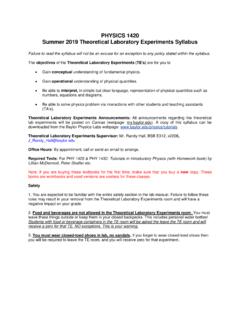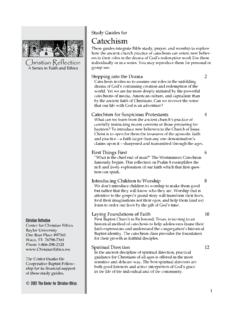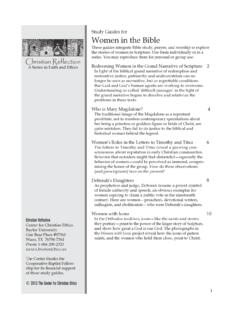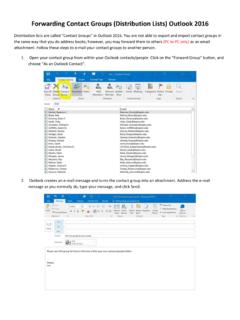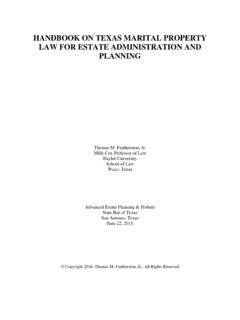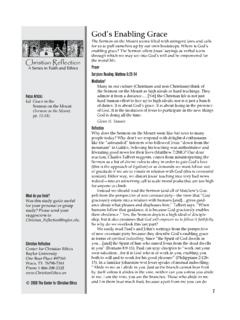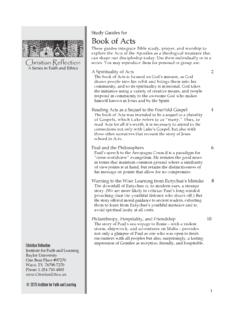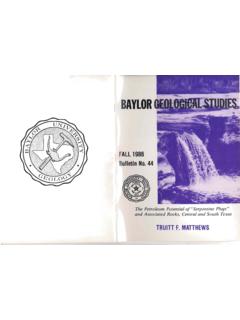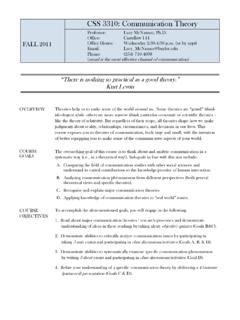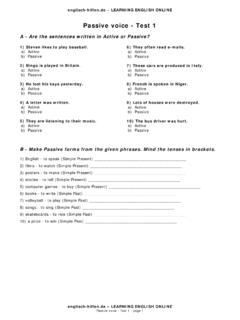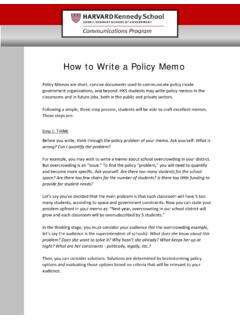Transcription of Guidelines for a Physics Lab Reports - Baylor University
1 Guidelines for a Physics Lab Reports A laboratory report has three main functions: (1) To provide a record of the experiments and raw data included in the report, (2) To provide sufficient information to reproduce or extend the data, and (3) To analyze the data, present conclusions and make recommendations based on the experimental work. General Comments: The single most important requirement for a laboratory report is clarity. Imagine that your audience is one of your classmates who missed that experiment. If you are using a word processor for your lab report, then use the spelling and grammar checkers.
2 The grammar check can be annoying because often technical sentences are wordy and complex, but it will help you avoid using too many passive sentences. In general, passive sentences are less understandable. However, grammar check will not assess clarity, and it will ignore simple errors. (I do not doubt there are still mistakes in this document I have run it through spelling and grammar checks.) Many technical writers prefer to write sentences with passive verbs. A simple example: The spring constant k was found from the slope to be N/m. If you run this sentence through the grammar check, it will tell you that was found is a verb in the passive voice .
3 To change this to an active voice you could write: The spring constant k is the slope, N/m. Not every sentence has to be in an active voice . What you want is a report that is readable. Lab Report Structure: I. Cover Sheet: This page has the course number and assigned lab section, the title of the experiment, your name, your lab partner s names, the date that the lab was performed and your TA s name. II. Abstract: The purpose of an abstract in a scientific paper is to help a reader decide if your paper is of interest to him/her. (This section is the executive summary in a corporation or government report; it is often the only section that a manager reads.)
4 The abstract should be able to stand by itself, and it should be brief. Generally, it consists of three parts which answer these questions: What did you do? A statement of the purpose of the experiment, a concise description of the experiment and Physics principles investigated. What were your results? Highlight the most significant results of the experiment. What do these results tell you? Depending on the type of experiment, this is conclusions and implications of the results or it may be lessons learned form the experiment. Write the abstract after all the other sections are completed.
5 (You need to know everything in the report before you can write a summary of it.) III. Data Sheets: For each experiment, the lab manual has one or more data sheets for recording raw data, as well as, intermediate and final data values. These are not for doodling, but for recording your data. Record the data neatly in pen. If your data values are so sloppily recorded that you have to recopy them, then the accuracy of the data is questionable. This fact will be reflected in your laboratory performance score. If there is a mistake, then draw a single line through that value.
6 White-Out and similar covering agents are expressly forbidden. 1 The values that you record on your data sheet must have: Units (such as kg for kilograms) Reasonable uncertainty estimates for given instruments and procedures Precision consistent with uncertainty (proper significant digits) Propagation of error for calculated quantities Your lab instructor s initials. If you happen to forget your lab manual, then you will take your data on notebook paper. Your lab instructor will initial that as your data sheet and you will turn that in with your lab report as well as your own data sheet from the lab manual.
7 You may not use your lab partner s datasheet and then make a photocopy. IV. Graphs: You must follow the Guidelines in the lab manual for all graphs. The first graphs of the semester must be made by hand, not computer software. After your lab instructor gives permission, you may use computer software to make graphs. Those graphs must also conform to the Guidelines in the lab manual. Remember that when plotting data with units, both the slope and intercept of a graph also have units. V. Sample Calculations: Show calculations in a neat and orderly outline form.
8 Include a brief description of the calculation, the equation, numbers from your data substituted into the equation and the result. Do not include the intermediate steps. Numbers in the sample calculations must agree with what you recorded in your data sheet. For calculations repeated many times, you only include one sample calculation. Answers should have the proper number of significant figures and units. (It is not necessary to show the calculation for obtaining an average, unless your TA requests that you do so.) Typing the equation into the lab report is not required; it is easier and faster to print these calculations neatly by hand.
9 If you wish to type this section, then use the equation editor in Microsoft Word. Your lab instructor can give you information on using the equation editor. VI. Discussion of Results: This is the most important part of the lab report; it is where you analyze the data. (In the future, you may not actually collect data; a lab technician or other people may collect the raw data. Regardless of your discipline, the most challenging and rewarding part of your work will be analyzing the data.) Begin the discussion with the experimental purpose and briefly summarize the basic idea of the experiment with emphasis on the measurements you made and transition to discussing the results.
10 State only the key results (with uncertainty and units) quantitatively with numerical values; do not provide intermediate quantities. Your discussion should address questions such as: What is the relationship between your measurements and your final results? What trends were observable? What can you conclude from the graphs that you made? How did the independent variables affect the dependent variables? (For example, did an increase in a given measured (independent) variable result in an increase or decrease in the associated calculated (dependent) variable?) Then describe how your experimental results substantiate/agree with the theory.
